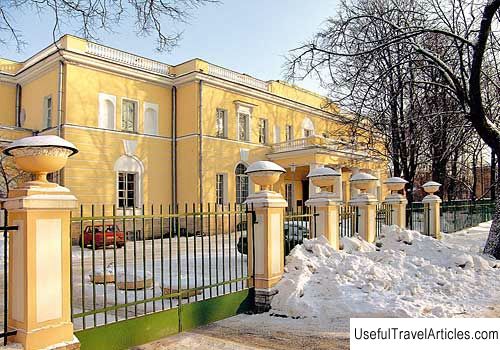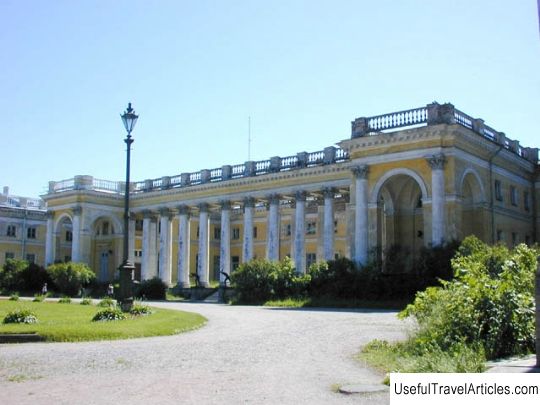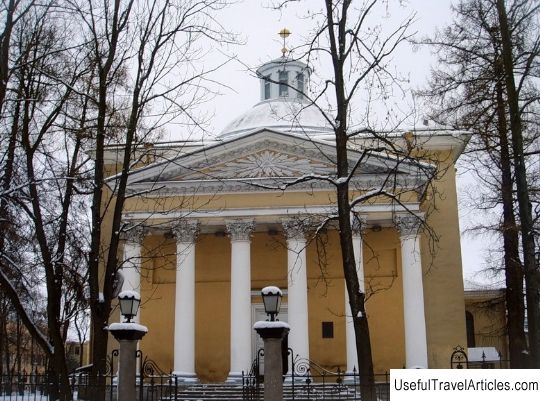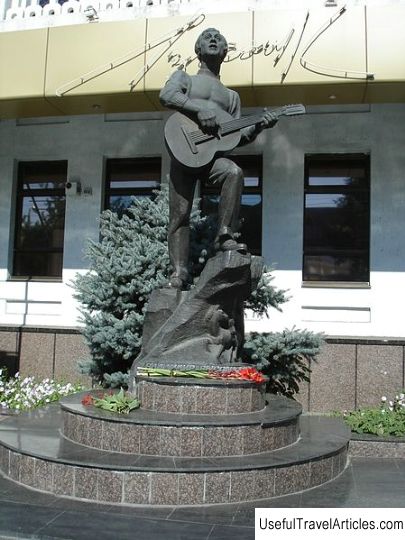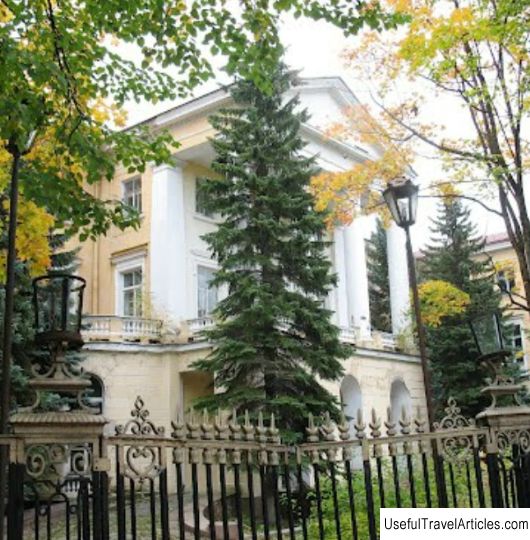Reserve palace description and photo - Russia - St. Petersburg: Pushkin (Tsarskoe Selo)
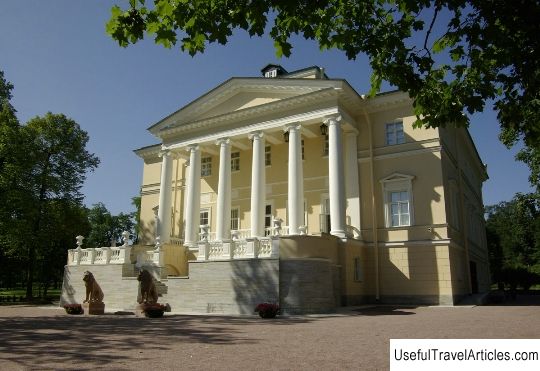
Reserve palace description and photos - Russia - St. Petersburg: Pushkin (Tsarskoe Selo). Detailed information about the attraction. Description, photos and a map showing the nearest significant objects. Photo and descriptionThe spare palace is located on the bank of the 4th Lower Pond, on Sadovaya Street in the city of Pushkin. Kochubei's dacha and the Vladimir Palace are other names for the palace. It is an object of cultural heritage of the Russian Federation. In the 16th year of the 19th century, a land plot in Tsarskoe Selo was donated by Emperor Alexander I to the State Dame M.V. Kochubei (Vasilchikova). For her and her husband, a famous statesman at the courts of the emperors Paul I, Alexander I and Nicholas I - Count (since 1831 - Prince) V.P. Kochubei, in 1817-1824 a country palace was built, which for a long time was called by their last name. The main building style is classicism. The exterior of the building resembles 19th century Italian villas with an adjoining landscape park. that Emperor Alexander I personally supervised the design of the palace, leaving his marks on many drawings, consistently involving architects P.V. Neelova and A.A. Menelas, and later V.P. Stasov. A year after the death of Prince Kochubey, in 1835, the building from his widow was acquired by the Department of Fates for the third son of Emperor Nicholas I - the four-year-old Grand Duke Nikolai Nikolaevich. At this time, the palace was called Nikolaevsky, and the ensemble of buildings was supplemented by service wings. In 1858, after the wedding, the owner sold it back to the Ministry of the Imperial Court and Fate. After that, in 1859, the palace was renamed the Reserve. There was a fire here in 1867. In 1875, the Reserve Palace fell into the hands of the newly married Grand Duke Vladimir Alexandrovich, a military leader and famous patron of art, collector, trustee of the Rumyantsev Museum, and since 1876 - the president of the Imperial Academy of Arts. The palace was restored by the architect A.F. Species. Then the construction of outbuildings was continued (the crew shed, the Unter-equestrian wing, the Cavalier's house and others). After the death of Vladimir Alexandrovich, in 1910, his bronze bust was installed in front of the palace building (only the pedestal was preserved). The spare palace was renamed Vladimirsky. The widow continued to dispose of the palace until the 1917 revolution. During the February Revolution and dual power, the palace was occupied by the Tsarskoye Selo Soviet of Workers 'and Soldiers' Deputies. The executive committee of the joint council was located here after the October Revolution. And since 1926, the building complex of the Reserve Palace was occupied by the House of Party Education. During the Great Patriotic War, the palace was seriously damaged, only the walls survived. In the 1950s, the building was actually rebuilt. In the period from 1958 to 1976, the Pushkin House of Pioneers was located here. Later, a local history exposition was arranged here for several years. In the 1990s, the Reserve Palace became part of the Tsarskoye Selo State Museum of Fine Arts. In 1990-2002, the Tsarskoye Selo branch of the St. Petersburg State Academy of Theater Arts was located in the Reserve Palace. The territory of the palace complex has turned into a home and a creative base for young artists, actors, directors. It hosted the International CookArt Festival (every 2 years), opened (Russian and international) creative workshops and master classes, exhibitions of contemporary art ("Reserve Gallery"), the Small Drama Theater of L. Ehrenburg was formed, the art group "Emergency Exit ". In 1996, the First Border Cadet Corps of the FSB of Russia was also located in the former outbuildings of the palace. In the summer of 2010, the Wedding Palace was opened in the Reserve Palace. In 1996, the First Border Cadet Corps of the FSB of Russia was also located in the former outbuildings of the palace. In the summer of 2010, the Wedding Palace was opened in the Reserve Palace. In 1996, the First Border Cadet Corps of the FSB of Russia was also located in the former economic buildings of the palace. In the summer of 2010, the Wedding Palace was opened in the Reserve Palace. We also recommend reading Museum of New Year and Christmas toys description and photos - Russia - North-West: Veliky Ustyug Topic: Reserve palace description and photo - Russia - St. Petersburg: Pushkin (Tsarskoe Selo). |
